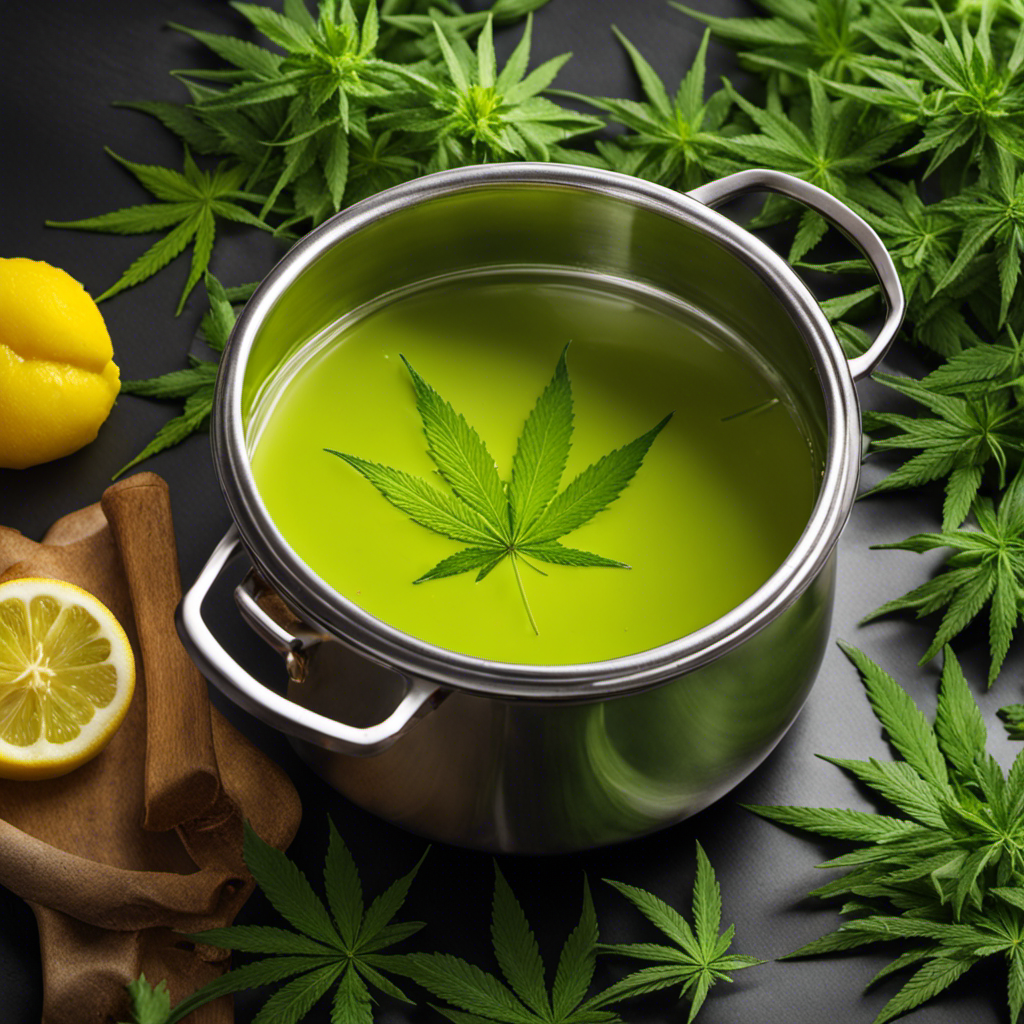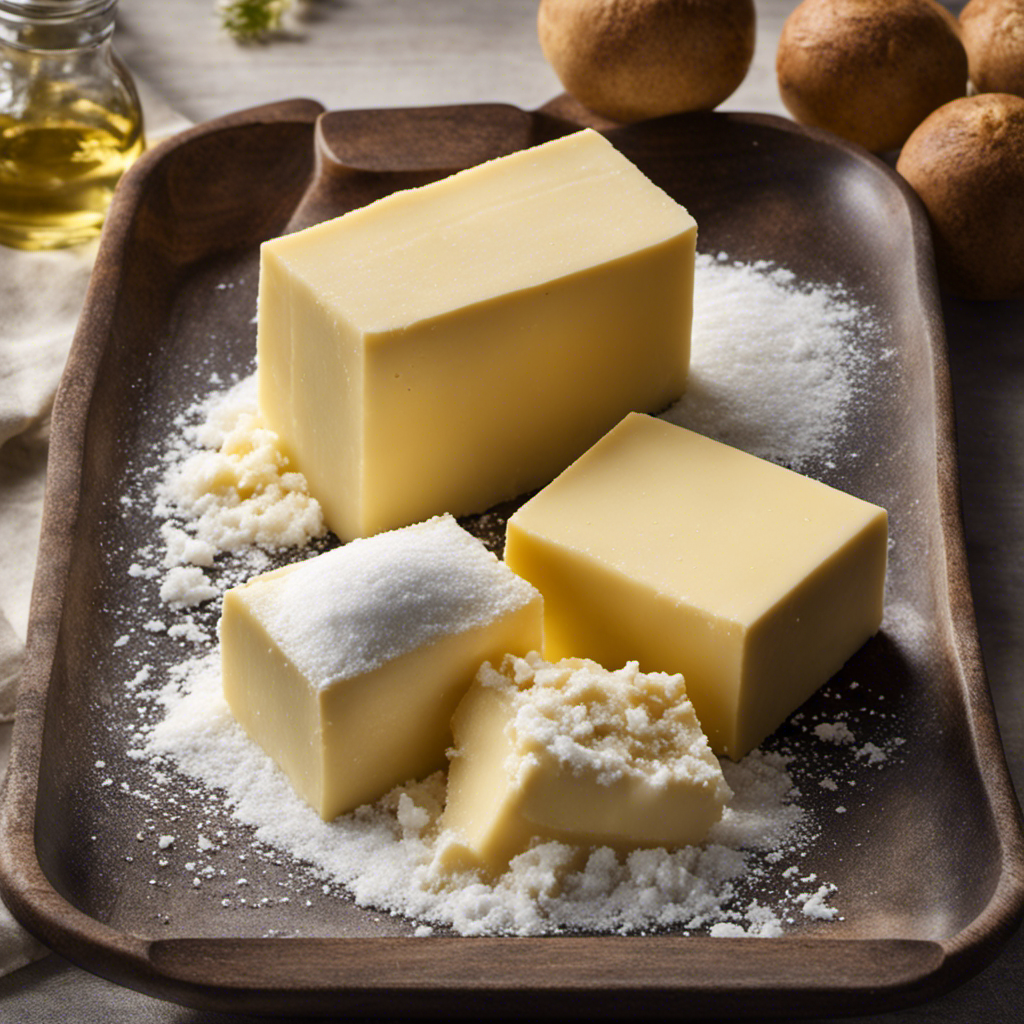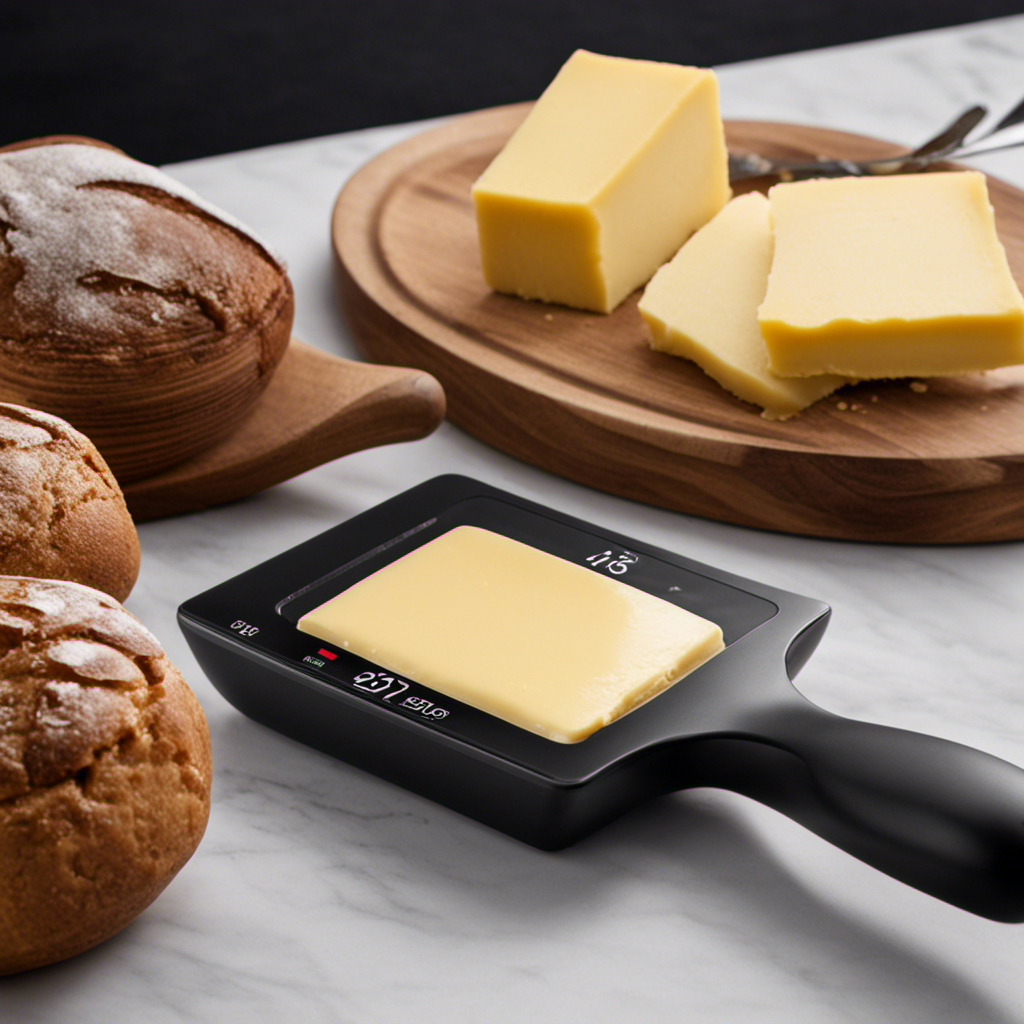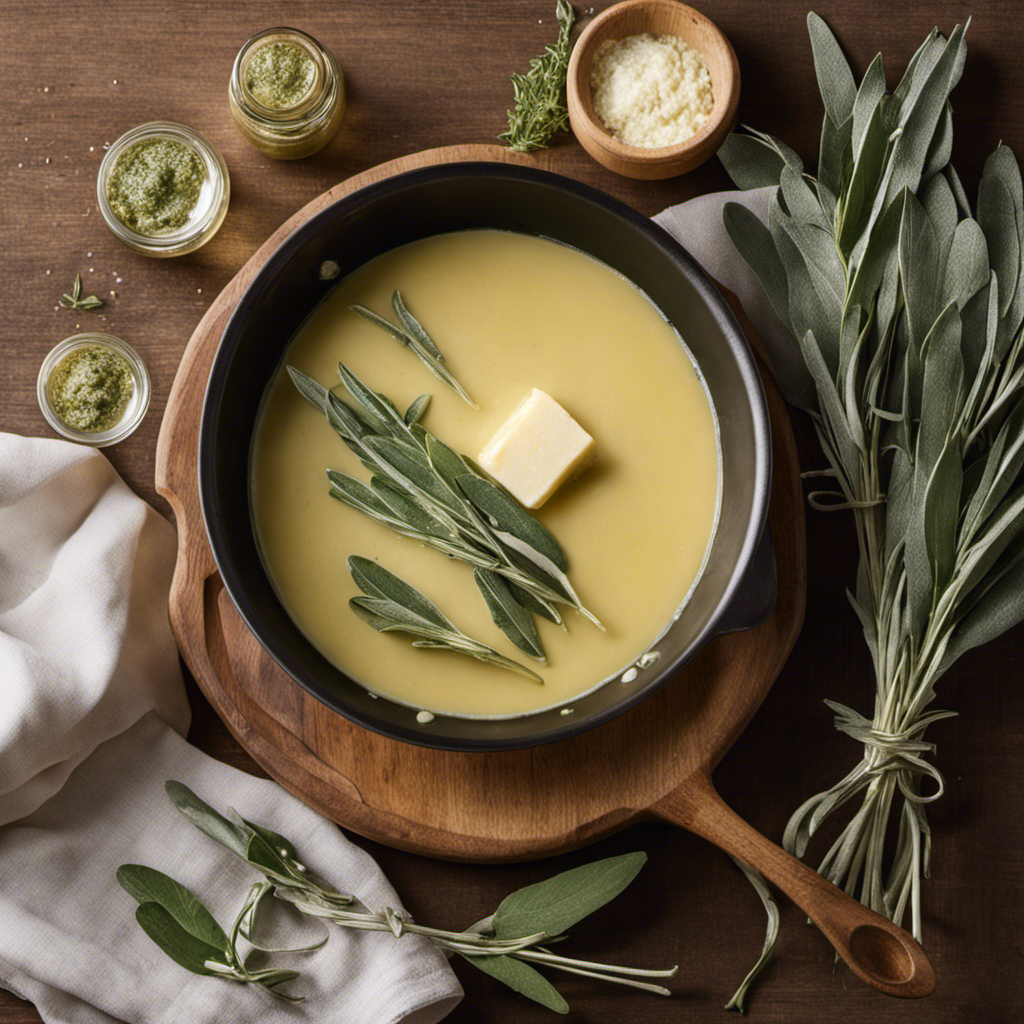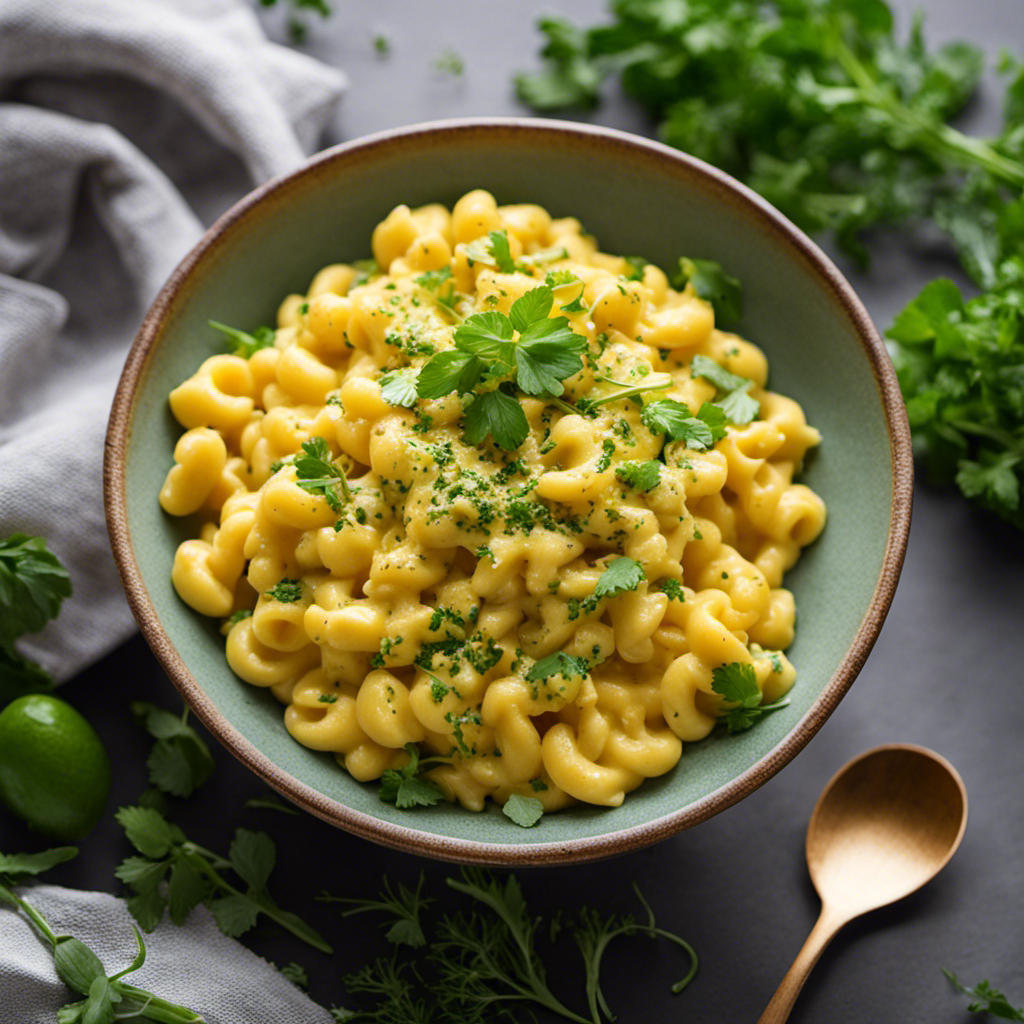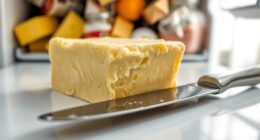I have always been curious about how to create cannabis-infused butter using trimmings. It appeared to be a challenging process, but after conducting some research and testing different methods, I have successfully figured it out.
In this article, I’ll guide you through the step-by-step process of gathering the trimmings, decarboxylating the weed, infusing the butter with trimmings, and ultimately straining and storing the precious weed butter.
With this knowledge, you’ll be able to elevate your recipes and enjoy the benefits of homemade weed butter. Let’s get started!
Key Takeaways
- Proper storage of trimmings in a cool, dark place helps maintain their potency for later use.
- Decarboxylation is essential to convert THCA to THC and maximize the potency of cannabinoids in the trimmings.
- Optimal infusion techniques and understanding dosage are crucial for extracting cannabinoids effectively and achieving desired effects.
- Straining the mixture properly and storing the weed butter in the refrigerator preserves its potency and extends its shelf life.
Gathering the Trimmings
Now that you’ve harvested your cannabis plants, it’s time to start gathering the trimmings for making your weed butter.
Gathering the trimmings requires some careful techniques to ensure you collect the best parts of the plant. Start by trimming the larger fan leaves close to the stem. These leaves have fewer cannabinoids and are better suited for composting.
Next, focus on the smaller sugar leaves that surround the buds. These leaves are coated in resin and contain a higher concentration of cannabinoids. Carefully snip them off and set them aside.
When it comes to trimming storage, it’s crucial to keep the trimmings in a cool, dark place to preserve their potency. Mason jars or airtight containers are perfect for this purpose.
Decarboxylating the Weed
First, you’ll want to ensure that you’ve properly decarboxylated the cannabis trimmings. Decarboxylation is a crucial step in making weed butter as it activates the cannabinoids and enhances their effects. Here’s how you can decarboxylate your trimmings:
- Preheat your oven to 240°F (115°C).
- Spread the trimmings evenly on a baking sheet lined with parchment paper.
- Place the baking sheet in the oven and let the trimmings bake for 40-50 minutes.
- Stir the trimmings occasionally to ensure even decarboxylation.
Decarboxylation benefits the final product by maximizing the potency of the cannabinoids present in the trimmings. It converts the non-psychoactive THCA into the psychoactive THC, making the butter more potent and effective.
Once you’ve completed the decarboxylation process, you’re ready to move on to infusing the butter with the trimmings.
Infusing the Butter With Trimmings
When it comes to infusing butter with trimmings, there are a few key points to consider: optimal infusion techniques, dosage, and potency.
Finding the right infusion technique is crucial for extracting the cannabinoids and terpenes from the trimmings effectively.
It’s important to understand the dosage to achieve the desired effects and avoid any potential discomfort.
Lastly, understanding the potency of the infused butter will help determine the appropriate amount to use in recipes or when consuming.
Optimal Infusion Techniques
To achieve the best results, it’s important to use optimal infusion techniques when making weed butter with trimmings. Here are some tips to ensure you get the most out of your infusion process:
-
Optimal Cooking Temperatures: Maintaining a consistent temperature is crucial for extracting the cannabinoids from the trimmings. I recommend cooking the butter and trimmings at a low and steady temperature (around 160-180°F) for a longer period of time. This allows for better infusion and minimizes the risk of burning the butter.
-
Different Strains for Infusion: The strain of cannabis you choose for your infusion can greatly impact the flavor and effects of your weed butter. Experiment with different strains to find one that complements your desired outcome. Indica strains are known for their relaxing effects, while sativa strains offer more uplifting and energizing effects.
-
Strain and Strain Again: After infusing the butter with the trimmings, it’s important to strain the mixture to remove any plant material. I recommend using cheesecloth or a fine mesh strainer to ensure a smooth and clean final product.
-
Patience is Key: Allow the butter to cool and solidify before using it in your recipes. This will ensure a consistent potency throughout your creations.
By following these optimal infusion techniques, you’ll be well on your way to creating delicious and potent weed butter.
Now, let’s dive into the next section and explore dosage and potency.
Dosage and Potency
If you’re wondering about dosage and potency, it’s important to consider the strain and amount of cannabis used in your infusion. Calculating the dosage of your homemade weed butter is crucial to ensure the desired effects and avoid any unwanted experiences.
To measure the potency of your infusion, start by determining the THC percentage of the cannabis strain you used. This information can usually be found on the packaging or through lab testing.
Next, calculate the total amount of THC in your infusion by multiplying the THC percentage by the weight of the cannabis used. For example, if you used 10 grams of cannabis with a THC percentage of 20%, your infusion will contain 2000mg of THC.
From there, you can divide the total THC content by the number of servings to determine the dosage per serving. Remember to start with a low dosage and adjust as necessary, as individual tolerance can vary.
Straining and Storing the Weed Butter
When it comes to making weed butter, it’s essential to know the proper straining techniques to ensure a smooth and potent end product.
In addition to straining, understanding the various long-term storage options is crucial for preserving the freshness and potency of your weed butter.
From freezing to canning, there are several butter preservation methods that can extend the shelf life of your infused creation.
Proper Straining Techniques
First, strain the mixture through a cheesecloth to remove any plant material before proceeding with the next step. Proper straining techniques are crucial to ensure a smooth and clean weed butter. Here are some filtering methods and alternative straining options to consider:
-
Cheesecloth: This is the most common and effective method. Place the cheesecloth over a bowl or container and pour the mixture slowly. Use a spoon to press down and extract as much liquid as possible.
-
Coffee filters: If you don’t have a cheesecloth, coffee filters can be a good alternative. Place them in a funnel and pour the mixture slowly. Be patient, as this method takes longer due to the fine filtration.
-
Fine mesh strainer: Another option is to use a fine mesh strainer. This method is faster but may not remove all plant material completely.
-
Nut milk bag: This reusable bag can be used as a strainer. Pour the mixture into the bag and squeeze out the liquid.
Once you have strained the weed butter, you can move on to the next step of long-term storage options.
Now, let’s discuss the best ways to store your weed butter for extended use.
Long-Term Storage Options
To keep your weed butter fresh for an extended period, you should consider storing it in an airtight container in the refrigerator. This method of storage offers long-term benefits, ensuring that your precious cannabis-infused butter remains potent and flavorful for weeks or even months.
The cool temperature of the refrigerator helps slow down the degradation of THC and other cannabinoids, preserving their potency. Additionally, an airtight container prevents the exposure of your weed butter to oxygen and other contaminants, further extending its shelf life.
If you’re looking for alternative preservation methods, you can also consider freezing your weed butter. Freezing can keep your butter fresh for up to six months, although it may slightly affect the texture.
Now, let’s explore other butter preservation methods.
Butter Preservation Methods
When it comes to preserving butter, there are a few tips and tricks that can help extend its shelf life and maintain its flavor. Here are some butter preservation methods that you can try:
-
Refrigeration: Keeping butter in the refrigerator is the most common and effective way to preserve it. Make sure to store it in an airtight container or wrap it tightly in wax paper to prevent it from absorbing odors.
-
Freezing: If you want to store butter for a longer period, freezing is a great option. Cut it into small portions and wrap them individually in plastic wrap or store them in a freezer-safe container. This way, you can easily take out the amount you need without thawing the whole stick.
-
Clarified Butter: Another way to preserve butter is by clarifying it. By removing the milk solids, you can increase its shelf life and use it for cooking at higher temperatures.
-
Alternative Uses: If you find yourself with extra butter that you won’t be able to use before it spoils, consider using it for alternative purposes. Butter can be used to moisturize dry skin, condition hair, or even remove sticky residue.
Using Weed Butter in Recipes
One popular way to use weed butter in recipes is by incorporating it into baked goods like cookies or brownies. The process involves infusing the butter with the active compounds found in cannabis, creating a potent ingredient that can be used in various ways.
When using weed butter in baked goods, it’s important to consider the potency of the strain used and the desired effects. Experimenting with different strains can add unique flavors and aromas to your recipes. For example, using a strain with citrus undertones can enhance the taste of lemon cookies, while a strain with earthy notes can complement the richness of chocolate brownies.
It’s essential to start with a small amount of weed butter and gradually increase the dosage to find the perfect balance for your desired effect.
Tips and Tricks for Making Weed Butter With Trimmings
Using leftover cannabis plant material, such as trimmings, can be a cost-effective way to make potent butter for your recipes. I’ve found that utilizing trimmings for other cannabis products is not only a sustainable approach but also a great way to maximize the use of the plant.
Here are some tips and tricks for making weed butter with trimmings:
-
Decarboxylation: Before infusing your trimmings into butter, it’s crucial to decarboxylate them. This process activates the THC, making it more potent and bioavailable.
-
Slow and low: When simmering your butter and trimmings, it’s best to maintain a low heat for an extended period. This allows the cannabinoids to fully infuse into the butter without scorching it.
-
Straining: To achieve a smooth and pure butter, strain the mixture through a cheesecloth or fine mesh strainer. This removes any plant material, resulting in a clean final product.
-
Alternative ways to consume weed butter: Besides using it in recipes, you can spread weed butter on toast, melt it onto vegetables, or even mix it into your favorite beverages for a unique cannabis-infused experience.
Frequently Asked Questions
How Long Can I Store the Trimmings Before Making Weed Butter?
I can store weed trimmings for a few weeks before making weed butter. To properly store them, I keep them in an airtight container in a cool, dark place. Alternatively, I can use trimmings for other purposes like making tinctures or extracts.
Can I Use Stems and Seeds as Trimmings for Making Weed Butter?
Yes, you can use stems and seeds as trimmings for making weed butter. However, they may not yield as potent results as using the actual buds. Alternatively, you can use them for other cannabis infused recipes or explore alternative methods of cannabis extraction from trimmings.
Can I Use Fresh Trimmings Instead of Dried Ones?
Fresh trimmings are better for making weed butter because they have higher moisture content, which helps with the extraction process. Dried trimmings can still be used, but fresh ones provide a more potent and flavorful end product.
Can I Use a Different Type of Fat Instead of Butter for Infusion?
Using an alternate fat for infusion is possible, and it can yield different flavors and effects in your weed butter. Options like coconut oil or olive oil can provide a unique taste and potential health benefits.
Is It Necessary to Decarboxylate the Trimmings Before Infusing Them Into Butter?
Decarboxylation techniques are crucial when infusing trimmings into butter for maximum potency. Without it, the THC won’t activate properly. However, there are alternative infusion methods like using coconut oil or olive oil.
Conclusion
In conclusion, making weed butter with trimmings is a rewarding and enlightening experience.
Just like a skilled artist transforming a blank canvas into a masterpiece, you have the power to turn ordinary trimmings into a potent and versatile ingredient.
Through the careful process of gathering, decarboxylating, infusing, and straining, you can create a golden elixir that will elevate your culinary creations to new heights.
Remember to experiment, embrace the artistry of cooking, and enjoy the journey of exploring the possibilities that weed butter has to offer.
Happy cooking!
